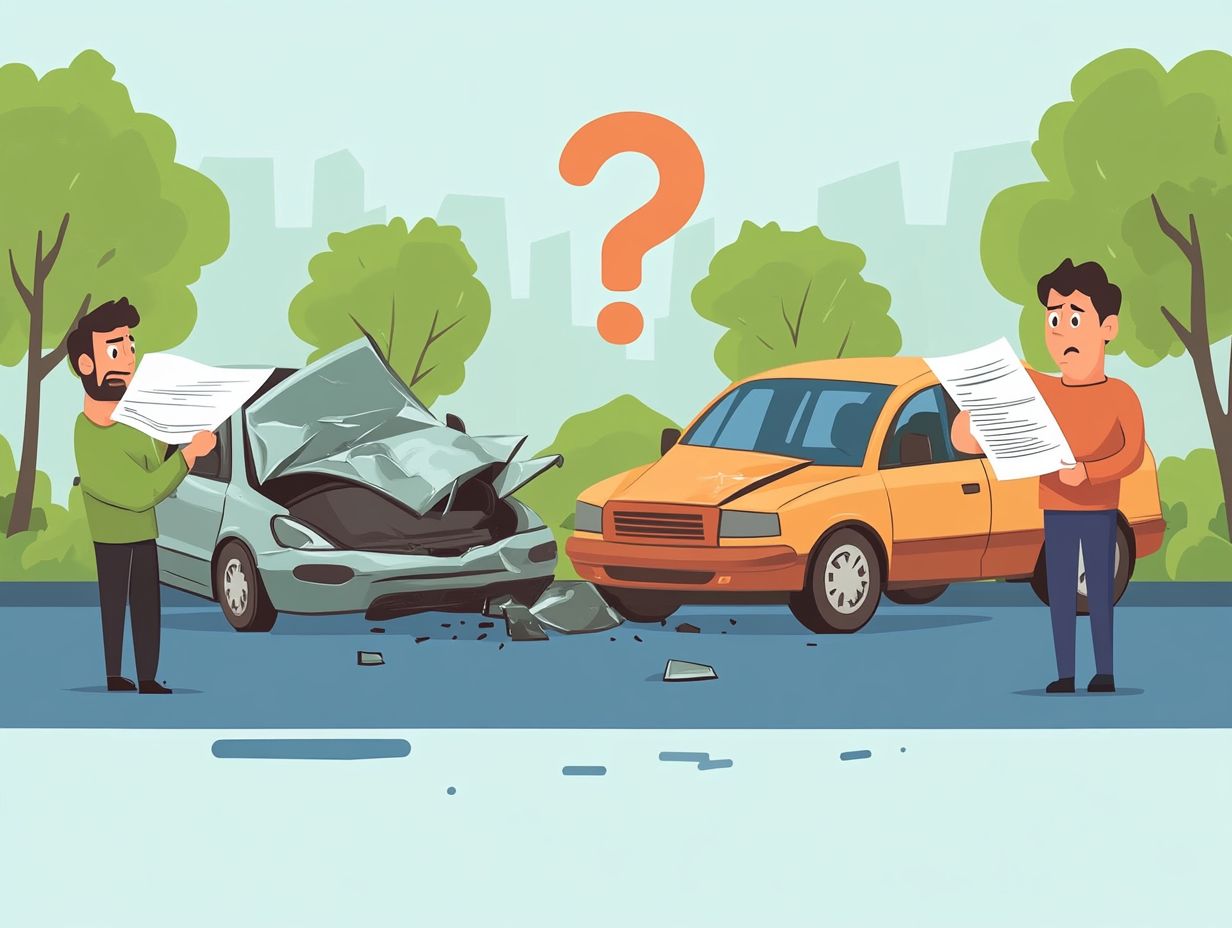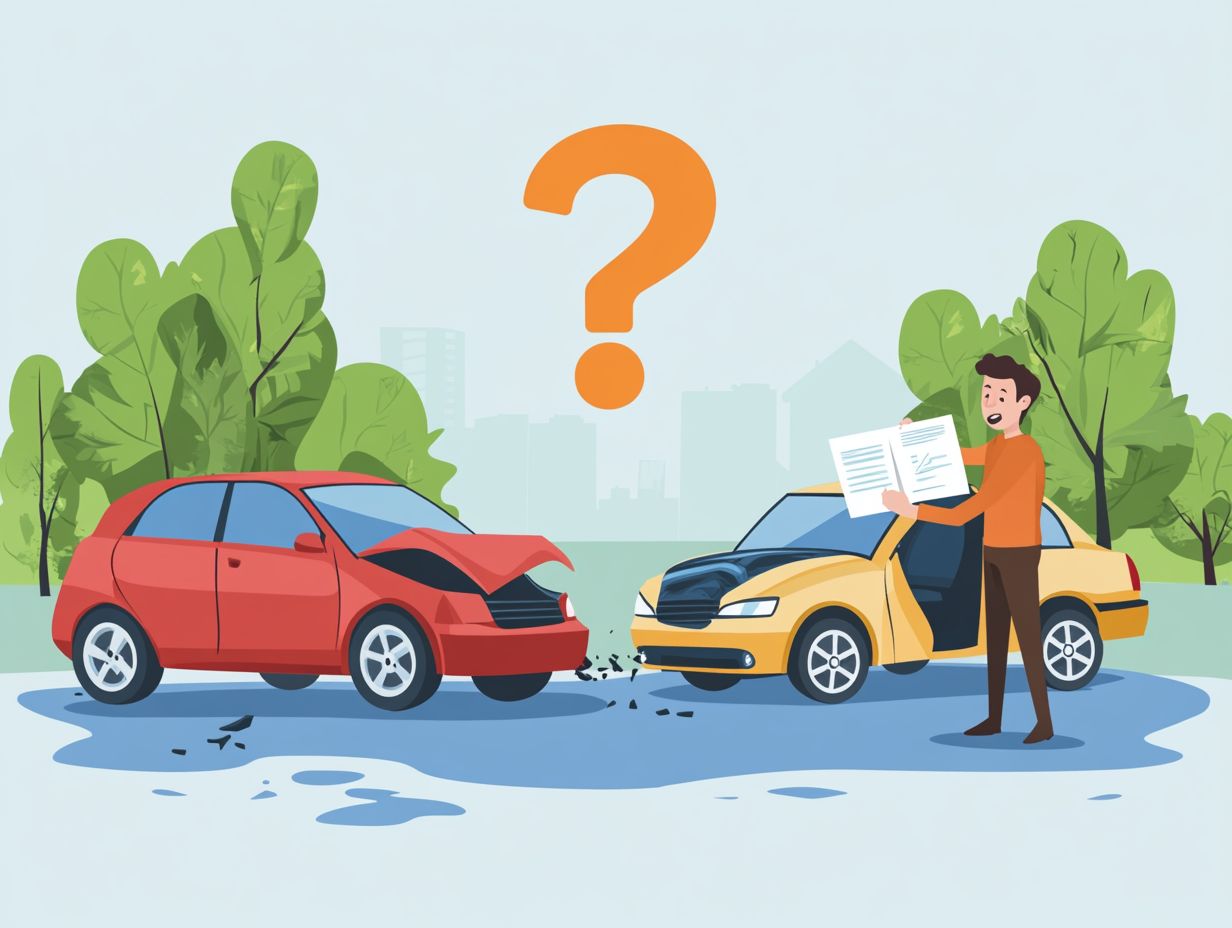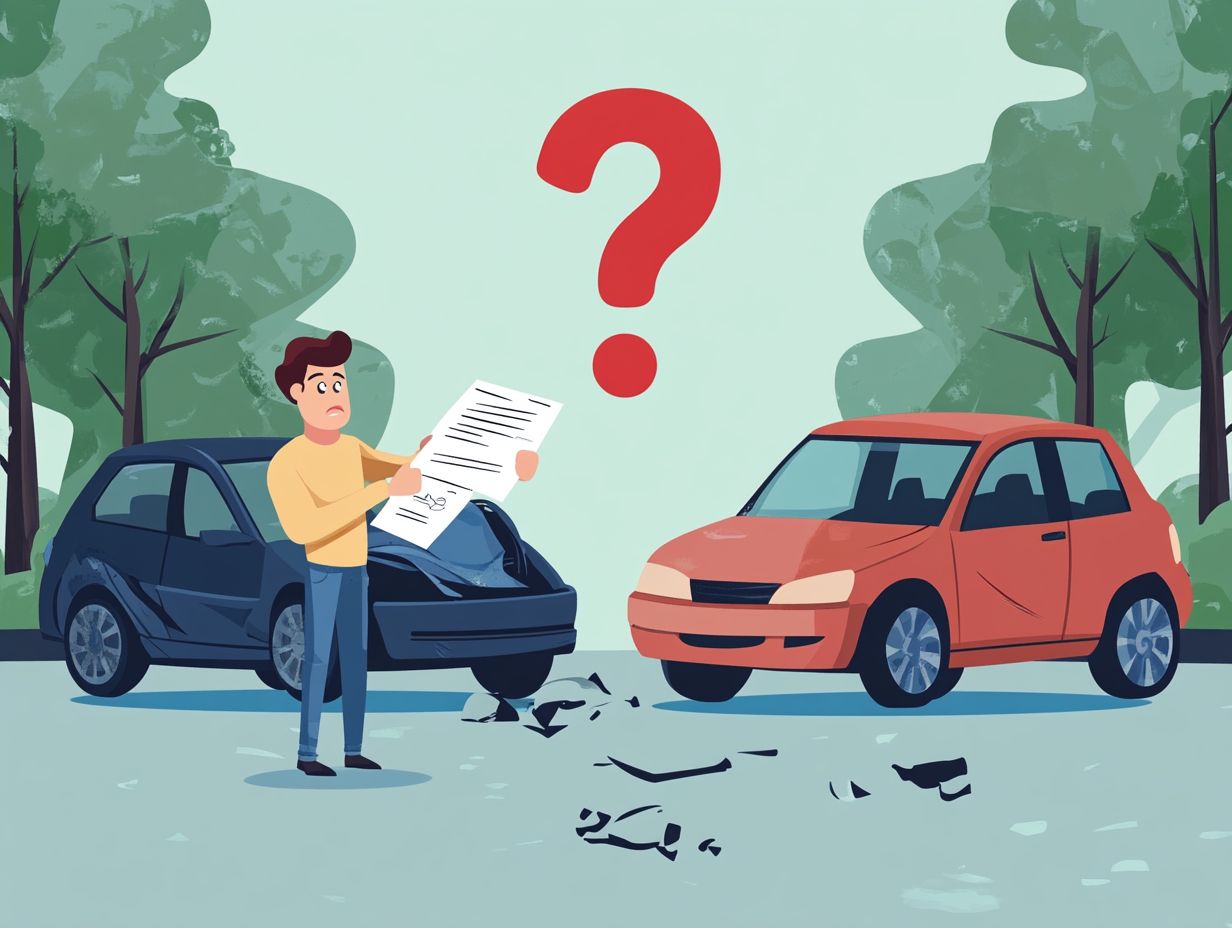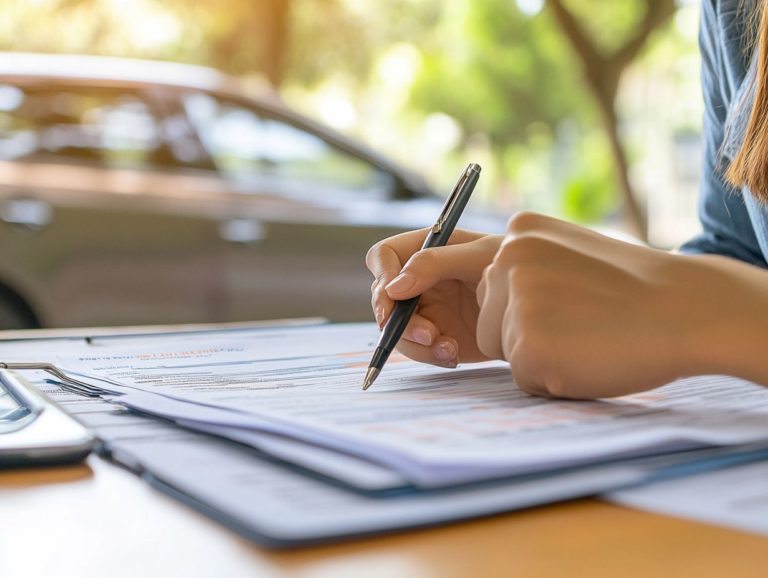Comparing Policies: What is Underinsured Motorist Coverage?
Navigating the complexities of auto insurance can feel overwhelming. Understanding underinsured motorist coverage is essential as it acts as a vital safety net. This policy protects you when the other driver doesn’t have enough insurance to cover your damages.
This article clarifies what underinsured motorist coverage entails. It also discusses how it compares to other policies, the benefits it offers, and key factors to consider when selecting the right coverage.
By the end, you’ll feel better equipped to make informed decisions about your auto insurance options.
Contents
- Key Takeaways:
- Understanding Underinsured Motorist Coverage
- How Underinsured Motorist Coverage Differs from Other Policies
- Benefits of Underinsured Motorist Coverage
- Factors to Consider When Choosing Underinsured Motorist Coverage
- How to File a Claim for Underinsured Motorist Coverage
- Documentation and Evidence Needed
- Frequently Asked Questions
- What is underinsured motorist coverage?
- How is underinsured motorist coverage different from uninsured motorist coverage?
- Is underinsured motorist coverage mandatory?
- Do I need underinsured motorist coverage if I already have health insurance?
- How much underinsured motorist coverage do I need?
- Can I use underinsured motorist coverage if I am at fault for the accident?
Key Takeaways:

- Underinsured Motorist Coverage protects you from drivers who do not have enough insurance to cover your damages.
- Compared to Uninsured Motorist Coverage, Underinsured Motorist Coverage covers damages from drivers with some insurance, but not enough.
- When choosing Underinsured Motorist Coverage, consider the coverage limits, deductibles (the amount you pay before insurance kicks in), and cost, along with the steps to file a claim if needed.
Understanding Underinsured Motorist Coverage
Underinsured Motorist (UIM) Coverage is crucial for shielding you from financial challenges that can arise when you get into an accident with someone who lacks sufficient insurance.
In states like South Carolina, this coverage provides a vital safety net. It helps you manage medical expenses, lost income, and property damage when the at-fault driver s liability insurance falls short.
By understanding UIM coverage, you empower yourself to make smart, informed choices about your insurance policies, ensuring your financial well-being on the road.
How Underinsured Motorist Coverage Differs from Other Policies
Knowing the difference between Underinsured Motorist (UIM) Coverage, Uninsured Motorist (UM) Coverage, and Liability Insurance is essential for comprehensive protection in the event of an auto accident.
UIM coverage is activated when the at-fault driver lacks sufficient insurance to cover bodily injury or property damage. In contrast, UM coverage applies when the at-fault driver has no insurance at all. Understanding these differences ensures you’re prepared for the unexpected on the road.
Comparison with Uninsured Motorist Coverage
Understanding the distinction between UIM and UM coverage is vital for drivers. UM coverage activates when you are in an accident with a driver who has no insurance. Meanwhile, UIM coverage kicks in when the at-fault driver has some insurance, but their policy limits fall short of covering all your damages.
Navigating these two types of coverage is critical, especially when considering their implications for claims. If you re involved in an accident, evaluate your own policy limits and any exclusions that could hinder your ability to claim full compensation.
Be aware that policy limits vary among insurance providers, and exclusions can differ significantly. This variability influences your payout potential in the event of an accident. Therefore, thoroughly reviewing your coverage options is crucial to protect yourself against the unique challenges posed by uninsured and underinsured motorists.
Comparison with Liability Coverage
When you examine Underinsured Motorist (UIM) Coverage and Liability Coverage, it s crucial to recognize that these two types of insurance serve distinct purposes in the world of auto insurance. Liability coverage is usually mandatory in most states; it s designed to cover the damages and injuries you might cause to others in an auto accident.
On the other hand, UIM coverage helps when the other driver doesn t have enough insurance to cover the damages from an accident.
Grasping the important differences between these two coverages is essential for any driver, especially since scenarios can vary widely. For example, when a driver causes an accident, liability coverage springs into action to pay for the other party s medical bills and vehicle repairs. If you re struck by someone with minimal coverage that doesn t adequately address your medical expenses or vehicle damage, UIM coverage becomes your safety net.
This coverage ensures that when liability limits are exceeded, you don t find yourself financially vulnerable. Taking the time to evaluate your coverage limits and understanding how each insurance type can protect you can significantly enhance your overall financial security in the unfortunate event of an accident.
Benefits of Underinsured Motorist Coverage

The benefits of Underinsured Motorist (UIM) Coverage are extensive, offering vital protection for you in the unfortunate event of an accident involving an underinsured driver. Given the rising costs of medical care and the potential for lost wages due to injuries, having UIM coverage guarantees that you’ll have the financial backing needed to handle medical bills.
This allows you to focus on your recovery without the added stress of substantial out-of-pocket expenses.
Protection Against Underinsured Drivers
One of the key advantages of Underinsured Motorist (UIM) Coverage is its strong protection against drivers who lack sufficient liability insurance to cover the costs associated with an accident. This protection is crucial for effective risk management, as it significantly reduces the financial risks you face when dealing with a negligent driver.
With this type of insurance, you can navigate the roads with confidence, knowing there s an added layer of security backing you up. To see if you need UIM coverage, take a moment to reflect on your driving habits consider how often you travel through high-traffic areas or places known for frequent accidents. Familiarizing yourself with local insurance regulations will enable you to make informed decisions.
In the aftermath of an accident, exploring recovery options is essential, and UIM coverage can offer critical financial support to tackle medical expenses and vehicle repairs. This transforms what could be a devastating experience into something much more manageable.
Coverage for Medical Expenses
UIM coverage is essential for covering medical expenses that arise from an accident, particularly in cases where bodily injury liability claims (the part of insurance that covers medical bills for injuries you cause in an accident) exceed the at-fault driver’s coverage limits. With this type of insurance, you can secure the necessary compensation for your injuries without the burden of financial strain, allowing for a more effective recovery from the accident.
When you sustain injuries due to a car accident, the costs can escalate rapidly, encompassing everything from hospital stays to rehabilitation and ongoing medical treatments. UIM coverage serves as your safety net, bridging the gap when the responsible party’s insurance falls short.
To access these crucial funds, you typically start by filing a claim with your own insurer, who will handle the complexities of navigating UIM alongside the at-fault driver s bodily injury liability.
This streamlined process can lead to quicker access to insurance benefits, ultimately facilitating a smoother recovery journey. This way, you can focus on healing rather than being overwhelmed by mounting medical bills.
Factors to Consider When Choosing Underinsured Motorist Coverage
When selecting Underinsured Motorist (UIM) Coverage, it’s essential to consider several factors to ensure you have the right protection tailored to your unique needs. Pay close attention to the coverage limits and the potential deductibles that may apply.
This thoughtful approach will help you align your choices with your financial situation and driving habits, ensuring you re well-protected on the road.
Coverage Limits and Deductibles
Understanding coverage limits and deductibles is crucial when selecting UIM Coverage, as these factors directly affect the level of protection available in the event of an accident. Coverage limits dictate the maximum amount your insurance company will pay for claims, while a deductible is the amount you pay out of your pocket before your insurance covers the rest.
Choosing higher coverage limits can provide a vital safety net that covers medical expenses, lost wages, and other damages if another driver is at fault but lacks adequate insurance. For instance, if you find yourself in an accident resulting in $100,000 worth of damages and your UIM limit is set at only $50,000, you ll be left facing significant out-of-pocket costs.
Opting for a low deductible generally means higher premiums, but it can prove beneficial when unexpected expenses arise. It’s vital to strike a balance between the coverage you desire and what you can comfortably afford, ensuring that you maintain financial protection without straining your budget.
Cost and Availability

The cost and availability of UIM Coverage can vary widely among insurance providers and across different locations. It’s crucial for you to shop around for the best auto insurance deals. Partnering with an insurance agent can offer you valuable insights into the myriad of coverage options and help pinpoint the most cost-effective solutions tailored to your specific needs.
Several factors influence these costs, including your personal history previous claims and driving records can significantly affect your premiums. Your location also affects rates, as some areas may report higher instances of uninsured drivers or accidents.
To navigate this landscape effectively, compare multiple quotes, focusing not just on price but also on the specifics of coverage. Understanding the nuances of each option will enable you to make informed decisions that align with your financial goals and personal protection needs.
How to File a Claim for Underinsured Motorist Coverage
Filing a claim for UIM Coverage is a process that requires your attention to detail to ensure you receive the compensation you rightfully deserve after an accident. As a South Carolina driver, knowing this process is crucial for protecting your interests!
Understanding these intricacies will enable you to navigate the complexities of dealing with underinsured motorists effectively.
Steps to Take After an Accident
Acting quickly is vital! After being involved in an auto accident with an underinsured motorist, take specific steps to protect your interests and streamline the insurance claim process. First, ensure everyone s safe and document the accident scene. Gather all relevant insurance information.
Once safety is assured, notifying the police should be your next priority. An official report can be tremendously helpful as you navigate the claims process. While you wait for law enforcement to arrive, collect witness statements; their observations can strengthen your case. Be sure to jot down their contact information.
Documenting any injuries both through photographs and detailed notes is crucial for your medical follow-up and any potential legal actions. Having comprehensive insurance information readily available simplifies filing an insurance claim and ensures that all parties’ coverages are accurately addressed.
Starting this documentation process immediately can significantly smooth your recovery journey.
Documentation and Evidence Needed
To ensure a successful claim for Underinsured Motorist (UIM) Coverage, it s essential for you to gather all necessary documentation and evidence related to the accident. The insurance claim process hinges on the quality of the evidence you present, which can include police reports, medical records, and photographs taken at the accident scene.
Witness statements can be invaluable, as they offer third-party accounts of the incident that help corroborate your version of events. Keeping detailed records, such as repair estimates and receipts for any related expenses, strengthens your claim and streamlines the investigation process.
A well-organized submission allows the insurer to assess your situation accurately and expediently, impacting how quickly you can recover. Thorough documentation is not just a formality; it is crucial for your claim’s outcome and the financial support you will receive. Gather your documentation today to ensure you re prepared!
Frequently Asked Questions
What is underinsured motorist coverage?

Underinsured motorist coverage is a type of car insurance that protects you from financial losses if you’re in an accident with a driver who doesn t have enough insurance to cover the damages. It covers your medical bills, replaces lost wages, and even pays for property damage!
How is underinsured motorist coverage different from uninsured motorist coverage?
Both types of coverage provide financial protection in case of an accident. Underinsured motorist coverage applies when the at-fault driver has insurance, but their coverage limit isn’t enough to cover all the damages. On the other hand, uninsured motorist coverage applies when the at-fault driver has no insurance at all.
Is underinsured motorist coverage mandatory?
It depends on your state. Some states require it, while others do not. It s best to check your state s insurance laws to determine if it s mandatory for you.
Do I need underinsured motorist coverage if I already have health insurance?
While health insurance can cover some medical expenses, it may not cover all the costs related to a car accident. Underinsured motorist coverage can help fill in the gaps and provide extra financial protection for medical expenses, lost wages, and other damages.
How much underinsured motorist coverage do I need?
The amount of underinsured motorist coverage you need depends on several factors, like your state s minimum requirements, your current health insurance coverage, and your personal financial situation. It s best to consult with an insurance agent to determine the appropriate amount for your specific needs.
Can I use underinsured motorist coverage if I am at fault for the accident?
No, underinsured motorist coverage only applies if the other driver is at fault for the accident. If you are at fault, you would need liability coverage to cover the damages of the other party.






